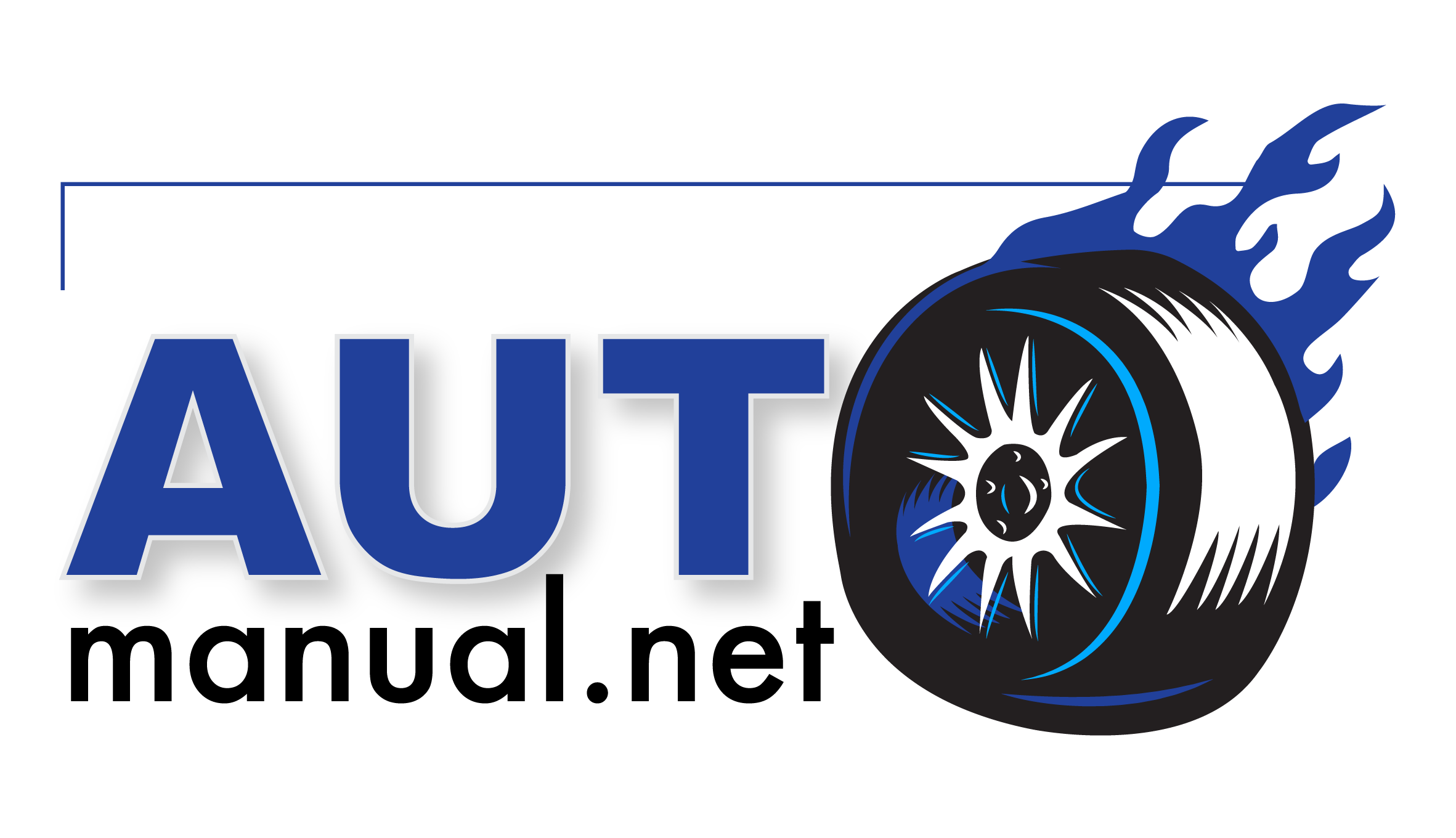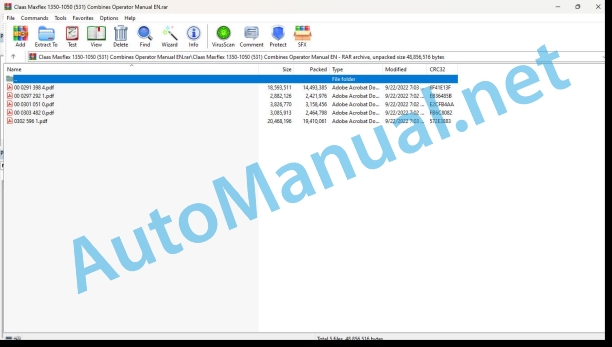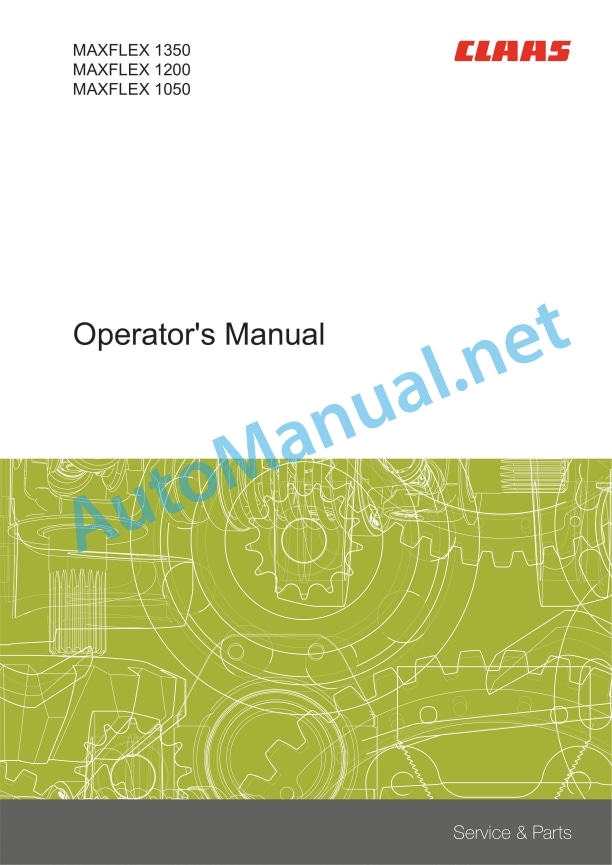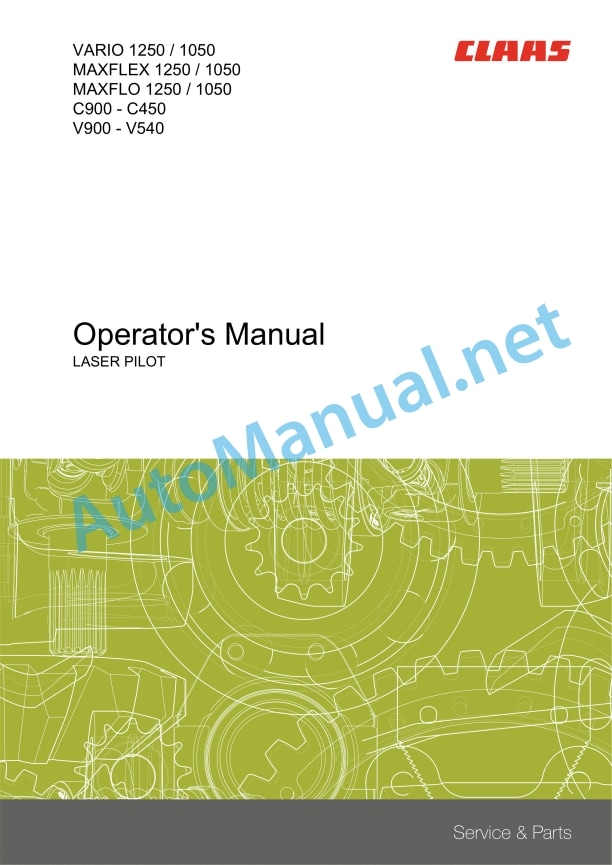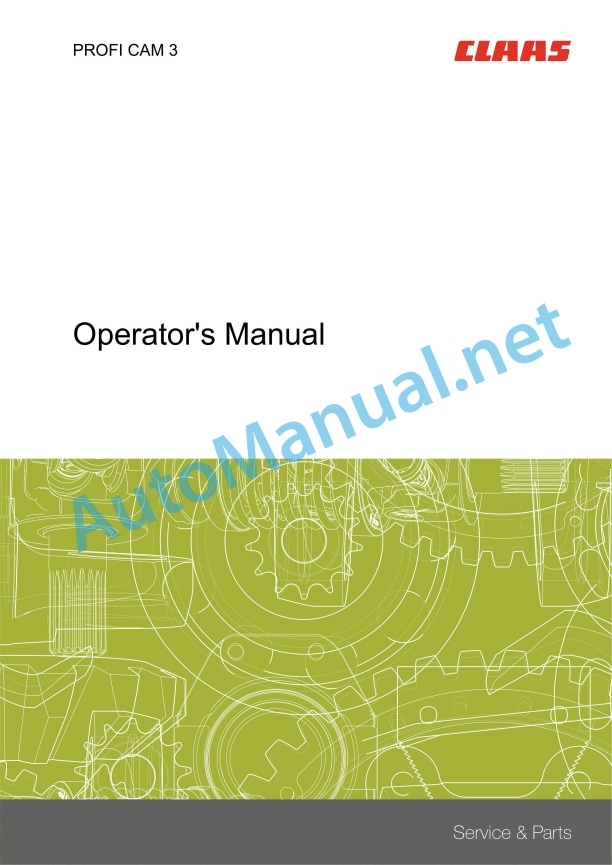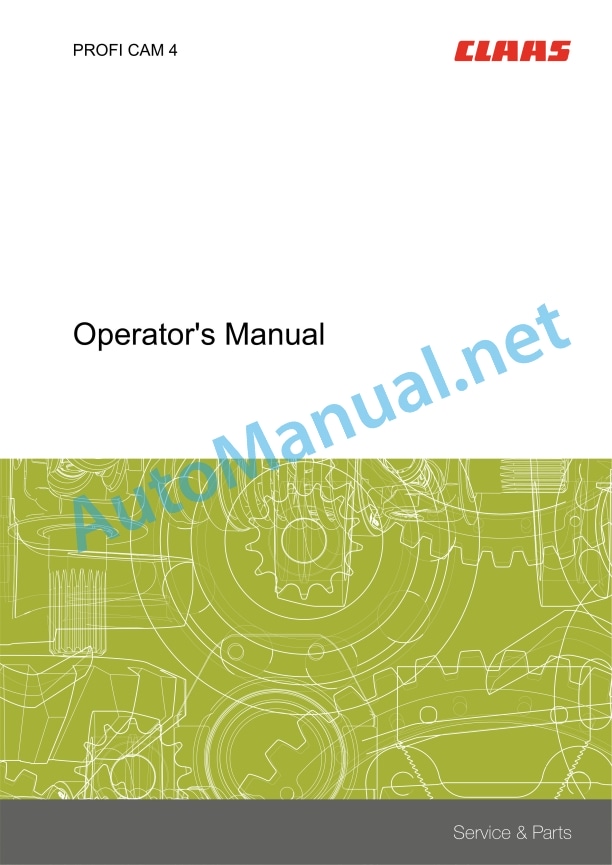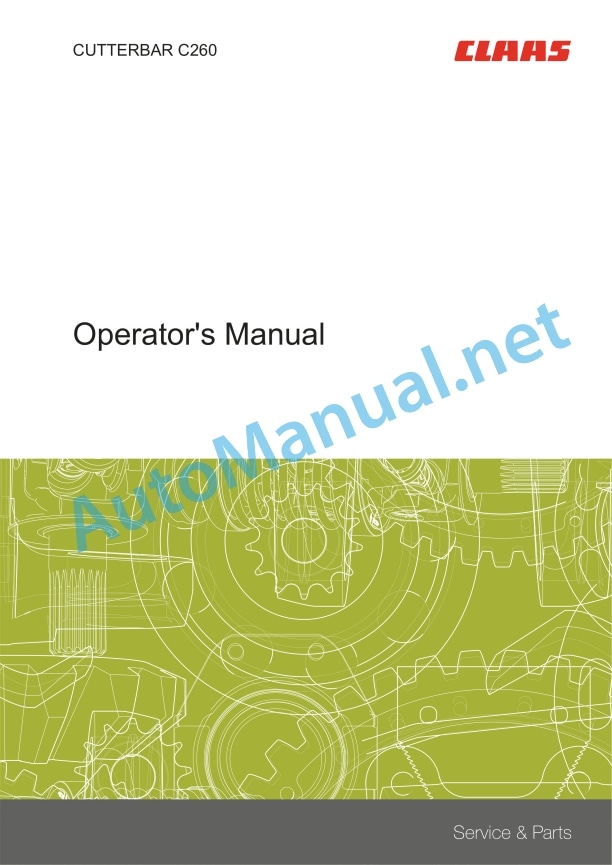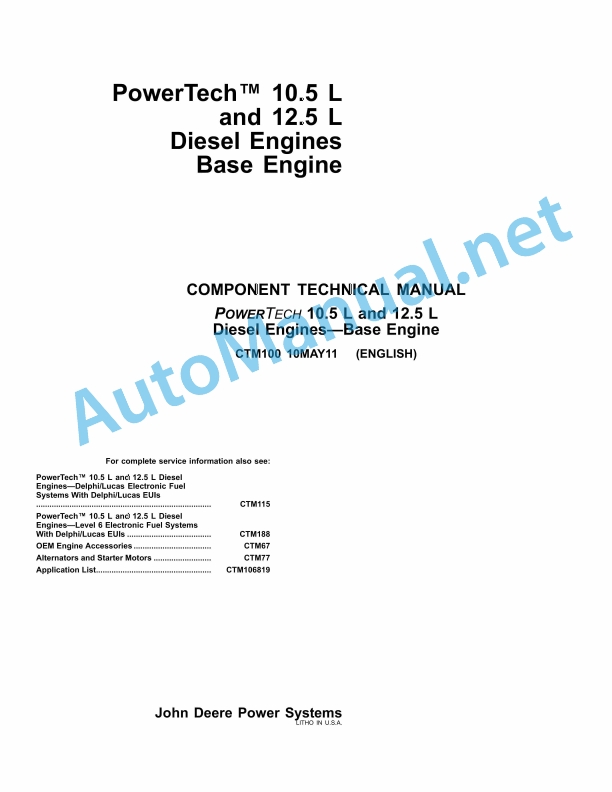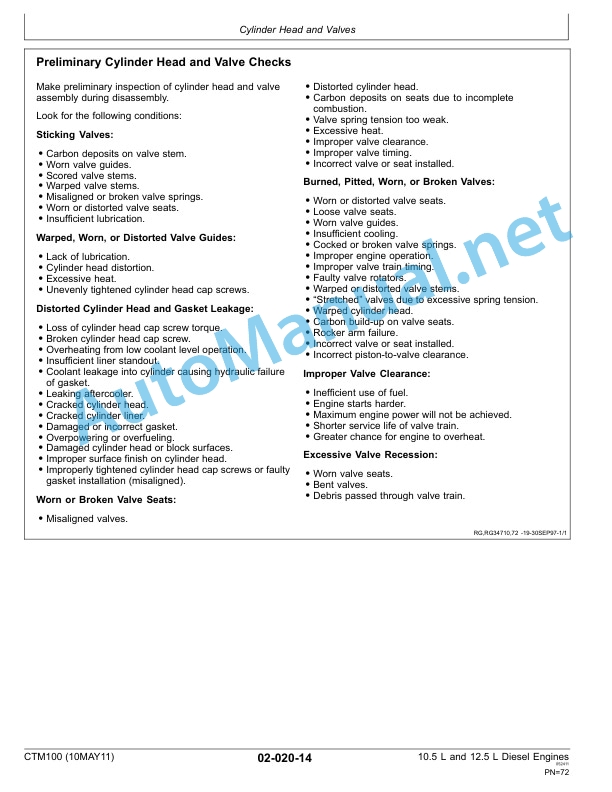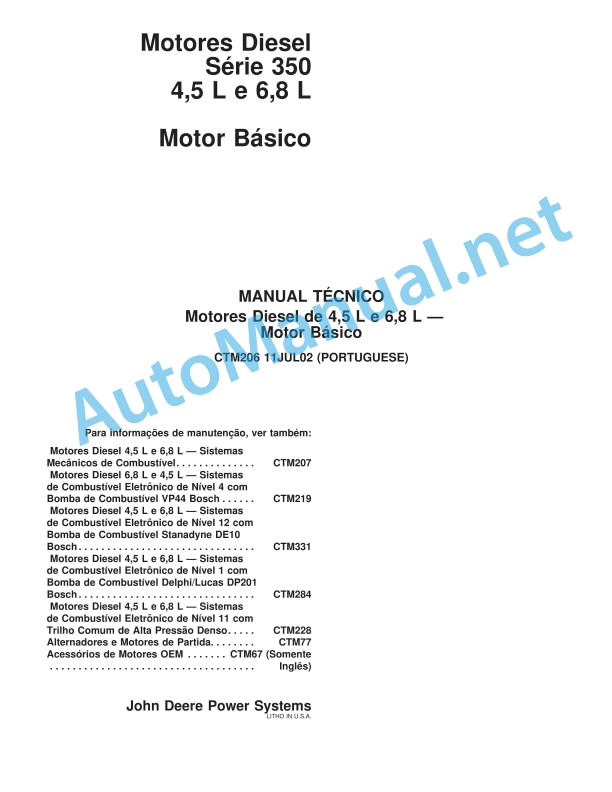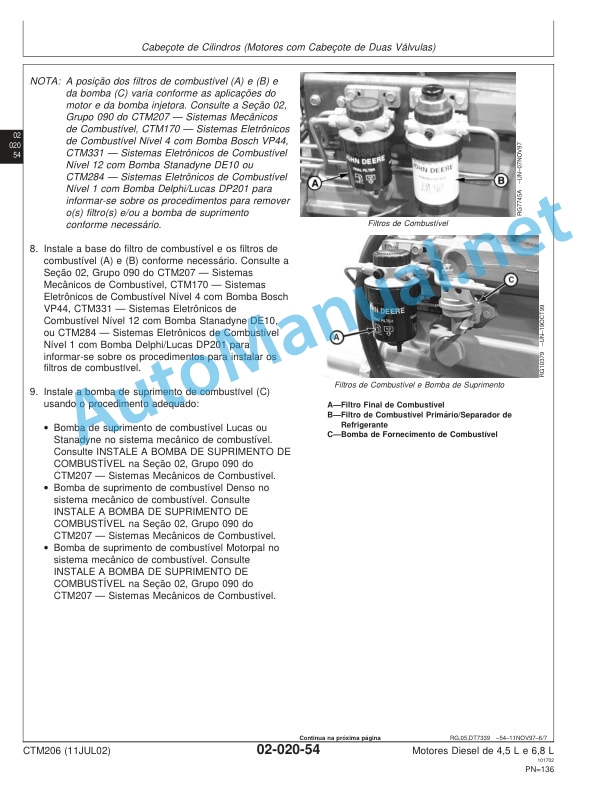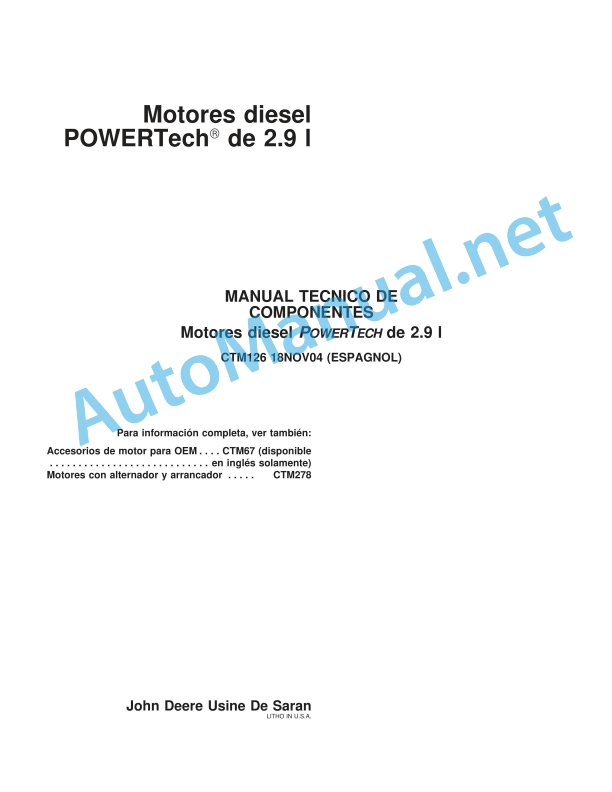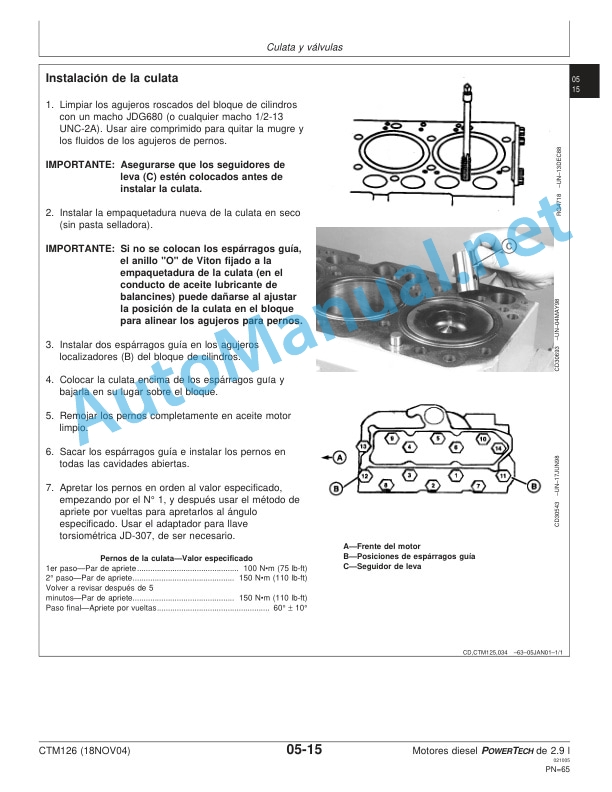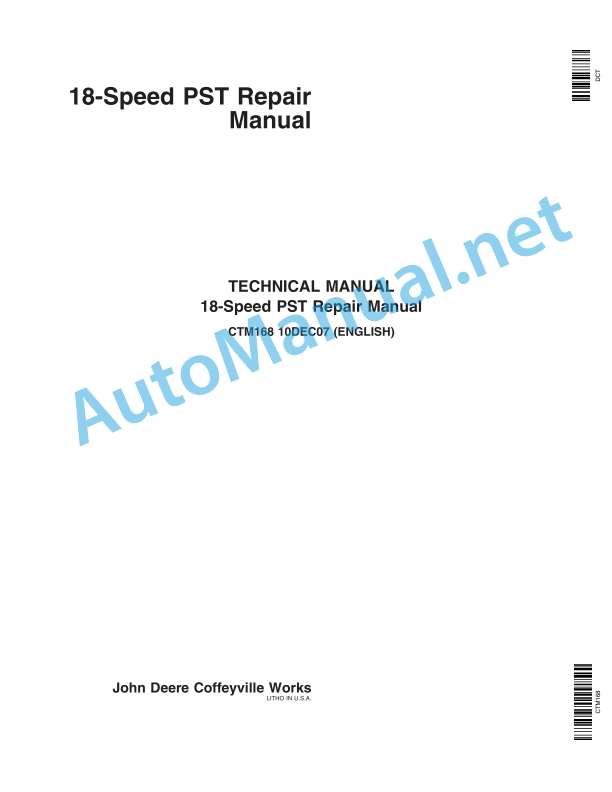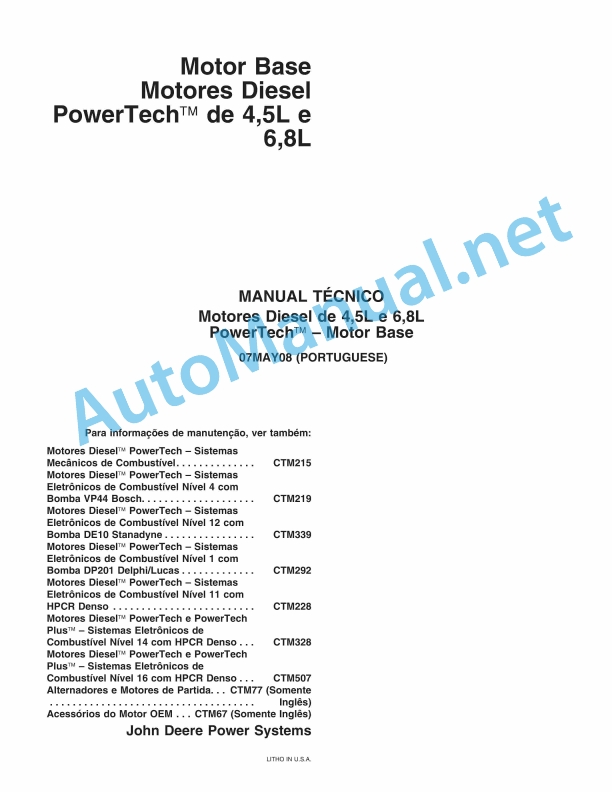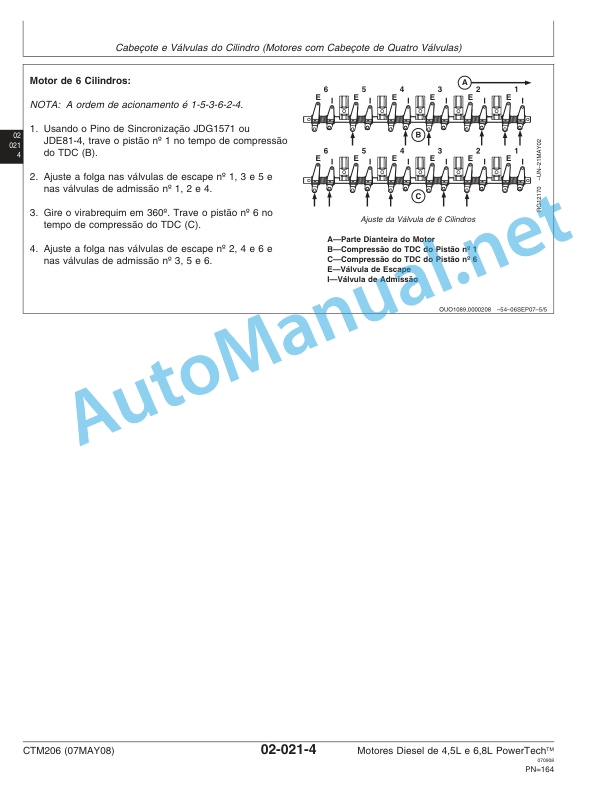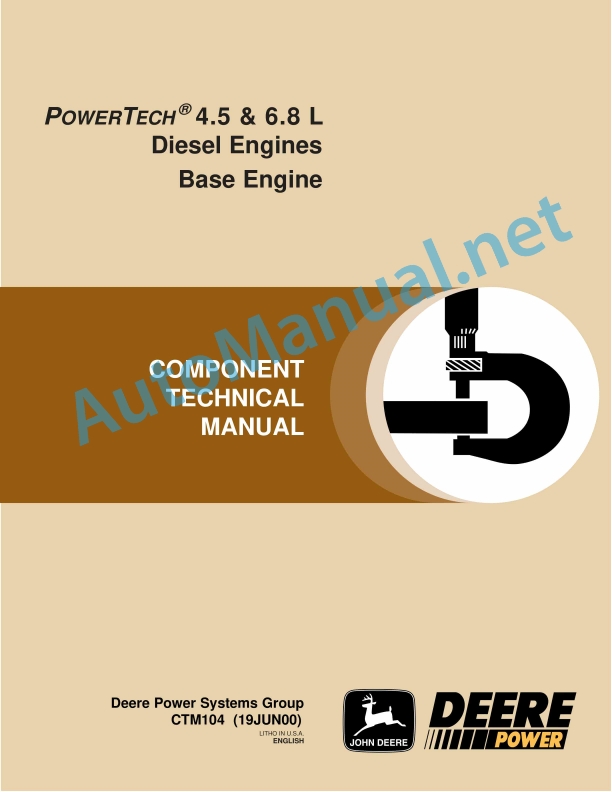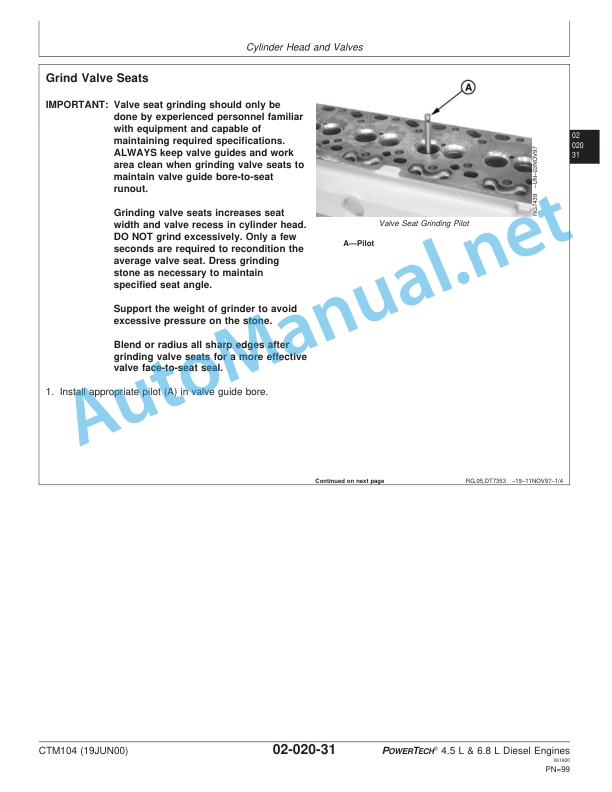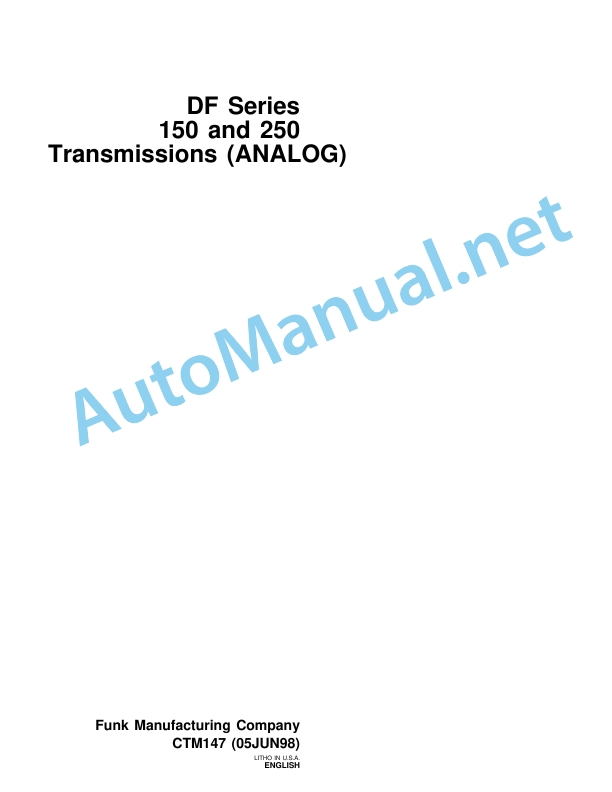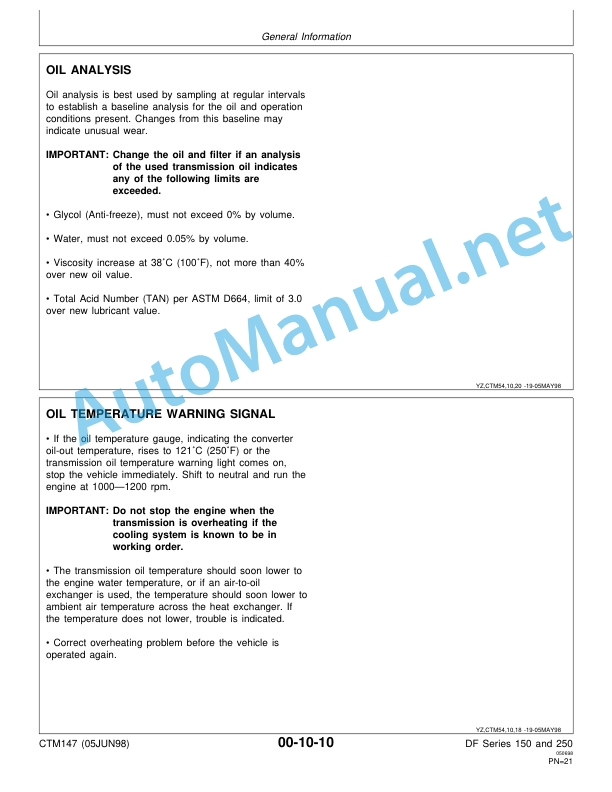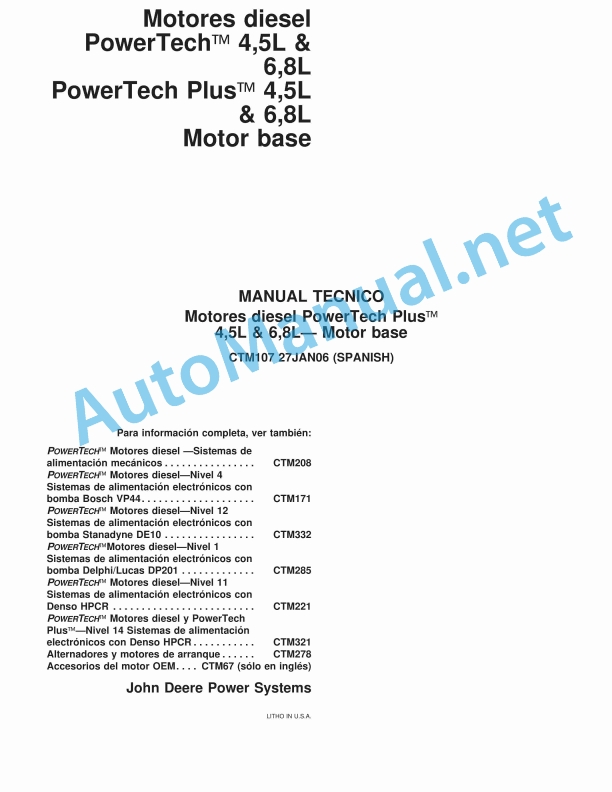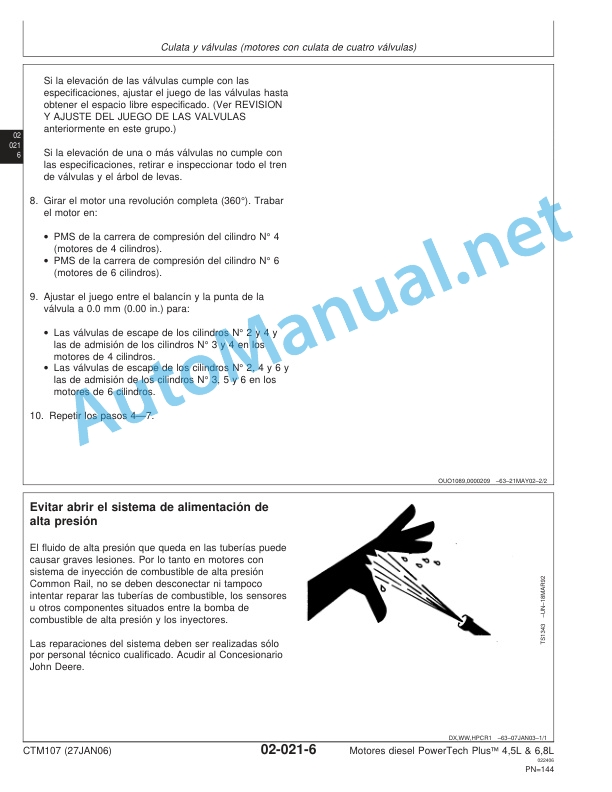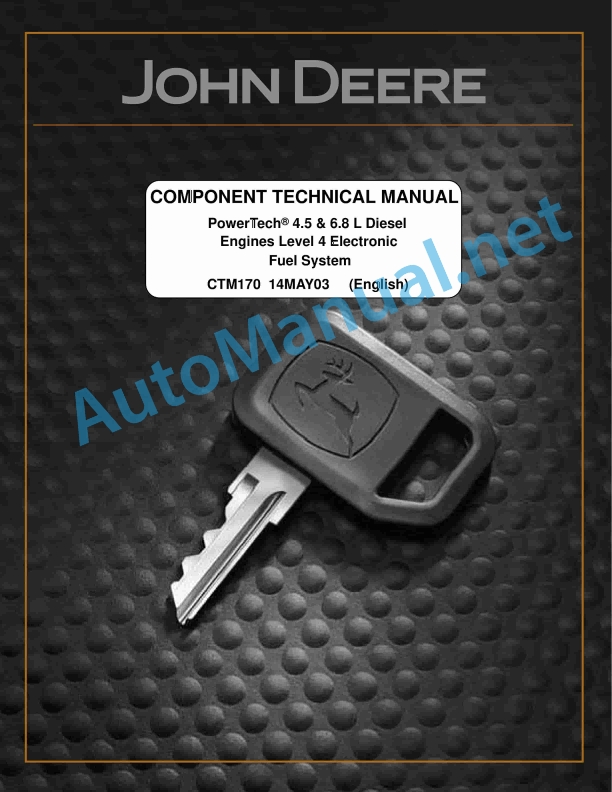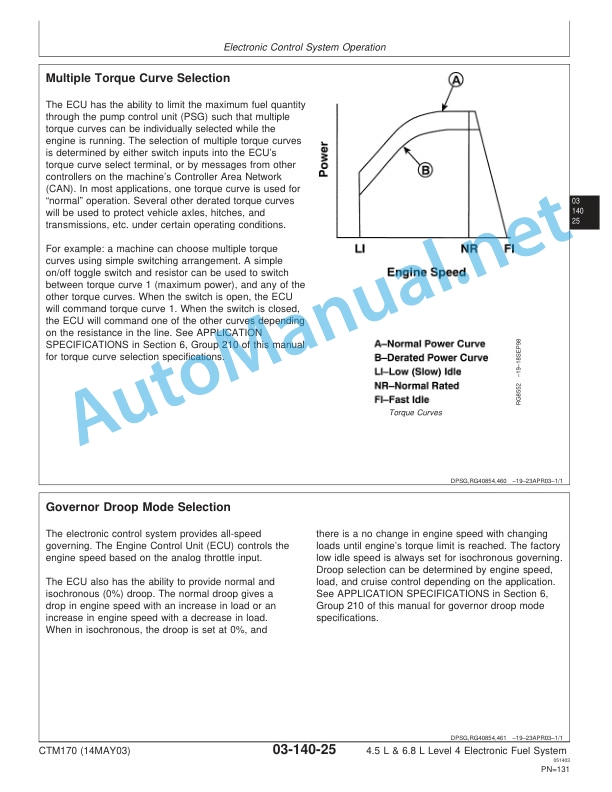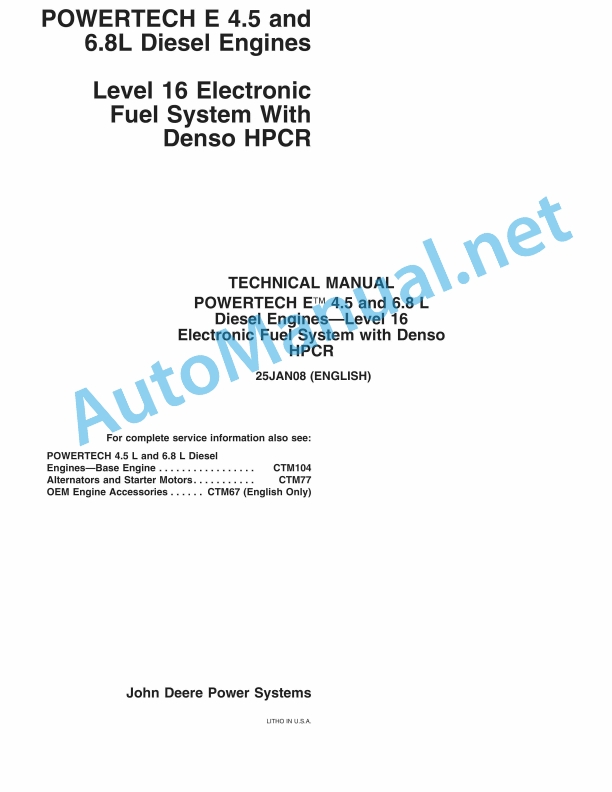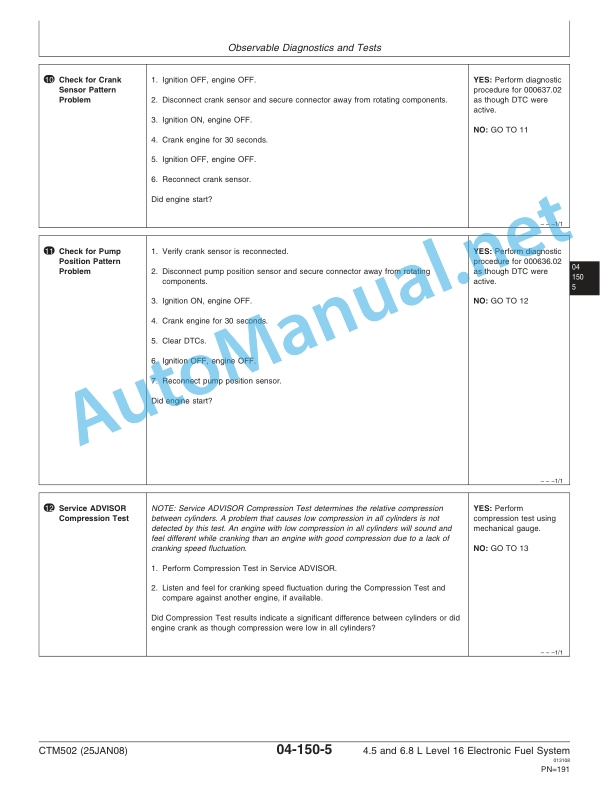Claas Maxflex 1350-1050 (531) Combines Operator Manual EN
$50.00
- Model: Maxflex 1350-1050 (531) Combines
- Type Of Manual: Operator Manual
- Language: EN
- Format: PDF(s)
- Size: 40.0 MB
File List:
00 0291 398 4.pdf
00 0297 292 1.pdf
00 0301 051 0.pdf
00 0303 482 0.pdf
0302 596 1.pdf
00 0291 398 4.pdf:
MAXFLEX 1350MAXFLEX 1200MAXFLEX 1050
Table of contents
1 Introduction
1.1 General information
1.1.1 Validity of manual
1.1.2 Information about this Operator’s Manual
1.1.3 Symbols and notices
1.1.4 Optional equipment
1.1.5 Qualified specialist workshop
1.1.6 Notes on maintenance
1.1.7 Notes on warranty
1.1.8 Spare parts and technical questions
1.2 Intended use
1.2.1 Intended use
1.2.2 Reasonably foreseeable misuse
2 Safety
2.1 Identifying warnings
2.1.1 Hazard signs
2.1.2 Signal word
2.2 Safety rules
2.2.1 Meaning of Operator’s Manual
2.2.2 Observing safety decals and warnings
2.2.3 Requirements for all persons working with the machine
2.2.4 Hazard areas
2.2.5 Standing between the machine and the front attachment
2.2.6 Coupling of machine with front attachment or transport trailer
2.2.7 Danger of injury from rotating shafts
2.2.8 Structural changes
2.2.9 Optional equipment and spare parts
2.2.10 Operation only following proper putting into operation
2.2.11 Technical condition
2.2.12 Danger due to damage to the machine
2.2.13 Keeping the safety devices functional
2.2.14 Personal protective equipment
2.2.15 Wearing suitable clothing
2.2.16 Removing dirt and loose objects
2.2.17 Preparing the machine for road travel
2.2.18 Unsuitable operating materials
2.2.19 Safe handling of operating and auxiliary materials
2.2.20 Environmental protection and disposal
2.2.21 Electrocution by electric system
2.2.22 Liquids under pressure
2.2.23 Only carry out work on the machine when it is stopped
2.2.24 Maintenance operations and repair work
2.2.25 Lifted machine parts and loads
2.2.26 Danger from welding work
2.3 Safety marking
2.3.1 Layout of safety decals
2.3.2 Safety decals on the front attachment
2.4 Safety devices
2.4.1 Applying the reel safety lock
2.4.2 Disengaging reel safety locks
2.4.3 Fitting the safety device on the finger bar
3 Machine description
3.1 Overview and method of operation
3.1.1 Overview
3.1.2 Function of MAXFLEX
3.2 Optional machine equipment
3.2.1 Grain sensor band
3.2.2 Stone trap front plate
3.2.3 Scraper
3.2.4 Anti-wrap guard
3.3 Identification plates and identification numbers
3.3.1 Identification plate
3.4 Information on the machine
3.4.1 Decal
4 Operating and display elements
4.1 Crop feeding
4.1.1 Control panel
5 Technical specifications
5.1 MAXFLEX
5.1.1 Compatible machines
5.1.2 Dimensions
5.1.3 Weights
5.1.4 Reel
5.1.5 Feed rake conveyor
5.1.6 Mowing unit
5.1.7 Safety features
5.2 Operating utilities
5.2.1 Lubricants
6 Machine preparation
6.1 Switching off and securing the machine
6.1.1 Switch off and secure the machine
6.2 Prior to putting into operation
6.2.1 Prior to initial operation
6.2.2 Removing the transport safety equipment
6.3 Loading the front attachment
6.3.1 Loading and lashing down the front attachment
6.4 Mounting the front attachment
6.4.1 Mounting the front attachment
6.4.2 Preparing the lock
6.4.3 Suspending the front attachment
6.4.4 Locking the front attachment
6.4.5 Installing the universal drive shaft
Checking the chain length
6.4.6 Mounting the multi-coupler
6.4.7 Adjusting the machine to the front attachment
6.5 Removing the front attachment
6.5.1 Removing the front attachment
6.5.2 Removing the multi-coupler
6.5.3 Removing the universal drive shaft
6.5.4 Unlocking the front attachment
6.5.5 Unhinging the front attachment
6.6 Steering
6.6.1 Installing the LASER PILOT*
6.7 Crop feeding
6.7.1 Fitting the crop dividers
Adjusting the crop dividers
6.8 Feeder unit
6.8.1 Adapting the scraper profiles to the feed rake conveyor
7 Operation
7.1 Driving the machine
7.1.1 Preparing road travel
7.1.2 Preparing for field work
7.1.3 Adjusting the parking position
7.1.4 Prior to fieldwork
7.1.5 Checking the crop pick-up
7.2 Grain harvest
7.2.1 Adjusting the front attachment for grain harvest
7.2.2 Locking the table
7.2.3 Installing the grain sensor band*
7.3 Soybean harvest
7.3.1 Adjusting the front attachment for soybean harvesting
7.3.2 Removing grain sensor bands*
7.3.3 Unlocking the table
7.4 Steering
7.4.1 Folding out the LASER PILOT*
7.5 Crop feeding
7.5.1 Removing the crop divider point
7.5.2 Installing the divider point
7.5.3 Installing the outer deflector*
7.5.4 Adjusting the reel tines
7.6 Feeder unit
7.6.1 Adjusting the scraper profiles of the intake auger
7.6.2 Adjusting the intake auger position
7.6.3 Adjusting the intake auger fingers
7.6.4 Removing the auger plate extension
7.6.5 Fitting the auger plate extension
7.6.6 Changing the intake auger speed
7.7 Mower unit
7.7.1 Adjusting the cutting height for harvesting soybeans
7.8 Ground guidance
7.8.1 Adjusting the skids
8 Faults and remedies
8.1 Causes and remedies
8.1.1 Improving crop flow
8.1.2 Crop pick-up
8.1.3 Intake auger
8.1.4 Mowing unit
8.1.5 Ground guidance
8.2 Crop feeding
8.2.1 Making the basic reel height setting
8.2.2 Replacing the reel tines
8.2.3 Adjusting the reel speed sensor
8.2.4 Bleeding the reel hydraulic cylinders
Bleeding the horizontal hydraulic cylinders
Bleeding the vertical hydraulic cylinders
8.3 Feeder unit
8.3.1 Replacing the intake auger fingers
8.4 Mower unit
8.4.1 Renewing the knife drive overload protection feature
9 Maintenance
9.1 Maintenance intervals
9.1.1 Every 10 operating hours or daily
9.1.2 After the first 100 operating hours
9.1.3 Every 100 operating hours
9.1.4 Every 250 operating hours
9.1.5 Every 500 operating hours or annually
9.1.6 Preserving the front attachment
9.2 Lubrication plan
9.2.1 Lubrication points – 100 h
9.2.2 Grease points – 250h
9.3 Transmission, clutch and driveshaft
9.3.1 Checking the spur angular gearbox oil level
9.3.2 Changing the spur angular gearbox oil
Draining the oil
Topping up oil
9.3.3 Checking the transfer gearbox oil level
9.3.4 Changing the transfer gearbox oil
Draining the oil
Oil chamber 1
Oil chamber 2
Topping up oil
Oil chamber 1
Oil chamber 2
9.4 Hydraulic system
9.4.1 Checking the hydraulic hoses
9.5 Crop feeding
9.5.1 Cleaning the table
9.5.2 Adjusting chain (K02)
9.6 Mower unit
9.6.1 Changing the knives
9.6.2 Replacing the knife section
9.6.3 Adjusting the knife clips
9.6.4 Replacing the short double fingers
9.6.5 Aligning the double fingers
9.7 Ground guidance
9.7.1 Cleaning the skids
9.7.2 Adjusting the skid load relief
9.7.3 Adjusting the control arm load relief
9.7.4 Replacing the wear skids
9.7.5 Replacing the pull strap
10 Putting out of operation and disposal
10.1 General information
10.1.1 Decommissioning and disposal
11 Declaration of Conformity
11.1 MAXFLEX
11.1.1 EC declaration of conformity
11.1.2 UK Declaration of Conformity
00 0297 292 1.pdf:
VARIO 1250 / 1050MAXFLEX 1250 / 1050MAXFLO 1250 / 1050C900 – C450V900 – V540
Table of contents
1 Introduction
1.1 Notes on the manual
1.1.1 Validity of manual
1.1.2 Notes on the Operator’s Manual
2 Safety
2.1 Identifying warnings
2.1.1 Hazard signs
2.1.2 Signal word
2.2 Safety rules
2.2.1 Operator’s Manual and other sources of information
Meaning of Operator’s Manual
2.2.2 Invisible laser radiation of laser class 1M
2.2.3 Intended use
3 Technical specifications
3.1 LASER PILOT
3.1.1 LASER PILOT
4 Operation
4.1 Steering
4.1.1 Folding out the LASER PILOT
4.1.2 Adjusting the LASER PILOT
Preparing the field
Adjusting the LASER PILOT to the crop
Adjusting the LASER PILOT to the crop
Preparing the adjusting procedure
Checking the LASER PILOT setting
Adjusting the LASER PILOT vertically
Checking the horizontal LASER PILOT pre-setting
Fine-adjusting the LASER PILOT horizontally
5 Faults and remedies
5.1 Overview of faults
5.1.1 LASER PILOT
00 0301 051 0.pdf:
PROFI CAM 3
Table of contents
1 Introduction
1.1 Notes on the manual
1.1.1 Validity of manual
1.1.2 Information about this Operator’s Manual
1.1.3 Symbols and notes
1.1.4 Optional equipment
1.1.5 Qualified specialist workshop
1.1.6 Maintenance information
1.1.7 Warranty notes
1.1.8 Spare parts and technical questions
1.2 Intended use
1.2.1 Intended use
1.2.2 Reasonably foreseeable misuse
2 Safety
2.1 Identifying warnings
2.1.1 Hazard signs
2.1.2 Signal word
2.2 Safety rules
2.2.1 Meaning of Operator’s Manual
2.2.2 Observing safety decals and warnings
2.2.3 Optional equipment and spare parts
3 Product description
3.1 Overview and method of operation
3.1.1 How the PROFI CAM works
3.2 Identification plates and identification number
3.2.1 Position of identification plates
3.2.2 Explanation of PROFI CAM identification plate
3.3 Information on the product
3.3.1 CE marking
4 Operating and control elements
4.1 Camera system
4.1.1 Camera system monitor
4.2 Menu structure
4.2.1 Main menu
4.2.2
4.2.3
4.2.4
4.2.5
4.2.6
5 Technical specifications
5.1 PROFI CAM
5.1.1 Monitor
5.1.2 Camera
5.1.3 Switch box
5.1.4 Degree of protection against foreign bodies and water
6 Preparing the product
6.1 Shutting down and securing the machine
6.1.1 Switching off and securing the machine
6.2 Prior to operation
6.2.1 Carry out prior to operation
6.2.2 Installing the sun protection
6.2.3 Aligning the camera
6.2.4 Connecting the camera electrics
7 Operation
7.1 Monitor
7.1.1 Switching on the monitor
7.1.2 Calling up the menu
7.1.3 Setting a menu item
7.1.4 Setting the image orientation
7.1.5 Setting automatic screen darkening
7.1.6 Image mirroring
7.1.7 Setting the trigger view
7.1.8 Setting the follow-up time for trigger view
7.1.9 Setting the display mode
7.1.10 Activating/deactivating a display mode
8 Faults and remedies
8.1 Electrical and electronic system
8.1.1 Overview of problems on PROFI CAM camera system
8.1.2 Replacing the switch box fuse
9 Maintenance
9.1 Maintenance intervals
9.1.1 Every 10 operating hours or daily
9.2 Camera system
9.2.1 Checking the camera system for dirt
9.2.2 Cleaning the camera
9.2.3 Cleaning the switch box
9.2.4 Cleaning the monitor
10 Placing out of operation and disposal
10.1 General Information
10.1.1 Putting out of operation and disposal
11 Technical terms and abbreviations
11.1 Abbreviations
11.1.1 Units
11.1.2 Abbreviations
11.1.3 Technical terms
00 0303 482 0.pdf:
PROFI CAM 4
Table of contents
1 Introduction
1.1 Notes on the manual
1.1.1 Validity of manual
1.1.2 Information about this Operator’s Manual
1.1.3 Symbols and notes
1.1.4 Optional equipment
1.1.5 Qualified specialist workshop
1.1.6 Maintenance information
1.1.7 Notes on warranty
1.1.8 Spare parts and technical questions
1.2 Intended use
1.2.1 Intended use
1.2.2 Reasonably foreseeable misuse
2 Safety
2.1 Identifying warnings
2.1.1 Hazard signs
2.1.2 Signal word
2.2 Safety rules
2.2.1 Meaning of Operator’s Manual
2.2.2 Structural changes
2.2.3 Optional equipment and spare parts
2.2.4 Operation only following proper putting into operation
2.2.5 Technical status
2.2.6 Respecting technical limit values
Respecting technical limit values
2.2.7 Hazards when driving on roads and fields
3 Product description
3.1 Overview and method of operation
3.1.1 How the PROFI CAM works
3.2 Identification plates and identification number
3.2.1 Identification plates
3.3 Information on the product
3.3.1 CE marking
4 Operating and display elements
4.1 Camera system
4.1.1 Camera system monitor
4.1.2 CEBIS
4.2 Menu structure
4.2.1 Main menu
4.2.2
4.2.3
4.2.4
4.2.5
4.2.6
5 Technical specifications
5.1 PROFI CAM
5.1.1 Monitor
5.1.2 Camera
5.1.3 Switch box
6 Preparing the product
6.1 Switching off and securing the machine
6.1.1 Switching off and securing the machine
6.2 Prior to putting into operation
6.2.1 Carry out prior to operation
6.2.2 Installing the sun protection
6.2.3 Aligning the camera
7 Operation
7.1 Monitor
7.1.1 Switching on the monitor
7.1.2 Calling up the menu
7.1.3 Setting a menu item
7.1.4 Setting the image orientation
7.1.5 Setting automatic screen darkening
7.1.6 Image mirroring
7.1.7 Setting the trigger view
7.1.8 Setting the follow-up time for trigger view
7.1.9 Setting the display mode
7.1.10 Activating/deactivating a display mode
8 Faults and remedies
8.1 Electric and electronic system
8.1.1 Overview of problems on PROFI CAM camera system
9 Maintenance
9.1 Maintenance intervals
9.1.1 Every 10 operating hours or daily
9.2 Camera system
9.2.1 Checking the camera system for dirt
9.2.2 Cleaning the camera
9.2.3 Cleaning the switch box
9.2.4 Cleaning the monitor
10 Putting out of operation and disposal
10.1 General information
10.1.1 Putting out of operation and disposal
11 Technical terms and abbreviations
11.1 Abbreviations
11.1.1 Units
11.1.2 Abbreviations
11.1.3 Technical terms
0302 596 1.pdf:
CUTTERBAR C260
Table of contents
1 Introduction
1.1 General information
1.1.1 Validity of manual
1.1.2 Information about this Operator’s Manual
1.1.3 Symbols and notes
1.1.4 Optional equipment
1.1.5 Qualified specialist workshop
1.1.6 Notes on maintenance
1.1.7 Notes on warranty
1.1.8 Spare parts and technical questions
1.2 Intended use
1.2.1 Intended use
1.2.2 Reasonably foreseeable misuse
2 Safety
2.1 Identifying warnings
2.1.1 Hazard signs
2.1.2 Signal word
2.2 Safety rules
2.2.1 Meaning of Operator’s Manual
2.2.2 Observing safety decals and warnings
2.2.3 Requirements for all persons working with the machine
2.2.4 Hazard areas
2.2.5 Standing between the machine and the front attachment
2.2.6 Coupling of machine with front attachment or transport trailer
2.2.7 Danger of injury from rotating shafts
2.2.8 Structural changes
2.2.9 Optional equipment and spare parts
2.2.10 Operation only following proper putting into operation
2.2.11 Technical condition
2.2.12 Danger due to damage to the machine
2.2.13 Keeping the safety devices functional
2.2.14 Personal protective equipment
2.2.15 Wearing suitable clothing
2.2.16 Removing dirt and loose objects
2.2.17 Preparing the machine for road travel
2.2.18 Unsuitable operating materials
2.2.19 Safe handling of operating and auxiliary materials
2.2.20 Environmental protection and disposal
2.2.21 Electrocution by electric system
2.2.22 Liquids under pressure
2.2.23 Only carry out work on the machine when it is stopped
2.2.24 Maintenance operations and repair work
2.2.25 Lifted machine parts and loads
2.2.26 Danger from welding work
2.3 Safety marking
2.3.1 Layout of safety decals
2.3.2 Safety decals on the front attachment
2.4 Safety devices
2.4.1 Applying the reel safety lock
2.4.2 Disengaging reel safety locks
2.4.3 Attaching finger bar safety bar
3 Machine description
3.1 Overview and method of operation
3.1.1 Overview
3.1.2 Function of CUTTERBAR C260
3.2 Optional machine equipment
3.2.1 Guide plate hump
3.2.2 Stripper
3.3 Identification plates and identification numbers
3.3.1 Identification plate
4 Technical specifications
4.1 Cutterbar C260
4.1.1 Compatible machines
4.1.2 Dimensions
4.1.3 Weights
4.1.4 Reel
4.1.5 Mowing unit
4.1.6 Lubricants
4.1.7 Safety features
5 Machine preparation
5.1 Switching off and securing the machine
5.1.1 Switch off and secure the machine
5.2 Prior to putting into operation
5.2.1 Prior to initial operation
5.3 Mounting front attachment
5.3.1 Installing the front attachment
5.3.2 Suspending the front attachment
5.3.3 Locking the front attachment
5.3.4 Installing the universal drive shaft
5.3.5 Mounting the coupler
5.4 Removing front attachment
5.4.1 Removing the front attachment
5.4.2 Removing the universal drive shaft
5.4.3 Unlocking the front attachment
5.4.4 Unhinging the front attachment
5.4.5 Dismounting the coupler
5.5 Prepare road travel
5.5.1 Road travel
5.6 Crop feeding
5.6.1 Adjusting the reel tines
5.6.2 Adjusting the horizontal reel
5.6.3 Fitting the crop dividers
5.7 Feeder unit
5.7.1 Adjusting the stripper profile of the intake auger
6 Operation
6.1 Driving the machine
6.1.1 Preparing road travel
6.1.2 Preparing for field work
6.1.3 Adjusting the parking position
6.1.4 Prior to fieldwork
6.1.5 Checking the crop pick-up
6.2 Crop feeding
6.2.1 Removing the crop divider
6.2.2 Adjusting the horizontal reel
6.2.3 Adjusting the intake auger fingers
6.3 Feeder unit
6.3.1 Adjusting the stripper profile of the intake auger
6.3.2 Adjusting the intake auger position
6.3.3 Adjusting the reel peripheral speed
6.4 Mower unit
6.4.1 Removing crop lifters
6.4.2 Installing crop lifters
6.5 Ground guidance
6.5.1 Adjusting the skid
7 Faults and remedies
7.1 Causes and remedies
7.1.1 Improving crop flow
7.1.2 Crop pick-up
7.1.3 Intake auger
7.1.4 Mowing unit
7.1.5 Ground guidance
7.2 Crop feeding
7.2.1 Adjusting the basic reel height setting
7.2.2 Replacing the reel tines
7.2.3 Bleeding the reel hydraulic cylinders
Bleeding the horizontal hydraulic cylinders
7.3 Feeder unit
7.3.1 Replacing the intake auger fingers
8 Maintenance
8.1 Maintenance intervals
8.1.1 Every 10 operating hours or daily
8.1.2 Every 50 operating hours
8.1.3 Preserving the front attachment
8.2 Lubrication plan
8.2.1 Lubrication points – 10 hours
8.2.2 Lubrication points – 50 hours, left
8.2.3 Lubrication points – 50 hours, right
8.3 Hydraulic system
8.3.1 Checking the hydraulic hoses
8.4 Crop feeding
8.4.1 Cleaning the table
8.4.2 Fitting and adjusting chain (K1)
8.4.3 Fitting and adjusting chain (K2)
8.4.4 Fitting and adjusting chain (K3)
8.5 Mower unit
8.5.1 Replacing the double fingers
8.5.2 Changing the knives
8.5.3 Replacing the knife section
8.5.4 Adjusting knife clips
8.5.5 Cleaning the skid plates
9 Putting out of operation and disposal
9.1 General information
9.1.1 Decommissioning and disposal
John Deere Repair Technical Manual PDF
John Deere PowerTech M 10.5 L and 12.5 L Diesel Engines COMPONENT TECHNICAL MANUAL CTM100 10MAY11
John Deere Repair Technical Manual PDF
John Deere Repair Technical Manual PDF
John Deere Diesel Engines POWERTECH 2.9 L Component Technical Manual CTM126 Spanish
John Deere Repair Technical Manual PDF
John Deere 18-Speed PST Repair Manual Component Technical Manual CTM168 10DEC07
John Deere Repair Technical Manual PDF
John Deere Diesel Engines PowerTech 4.5L and 6.8L – Motor Base Technical Manual 07MAY08 Portuguese
John Deere Repair Technical Manual PDF
John Deere Repair Technical Manual PDF
John Deere DF Series 150 and 250 Transmissions (ANALOG) Component Technical Manual CTM147 05JUN98
John Deere Repair Technical Manual PDF
John Deere Repair Technical Manual PDF
John Deere Repair Technical Manual PDF
John Deere POWERTECH E 4.5 and 6.8 L Diesel Engines TECHNICAL MANUAL 25JAN08
